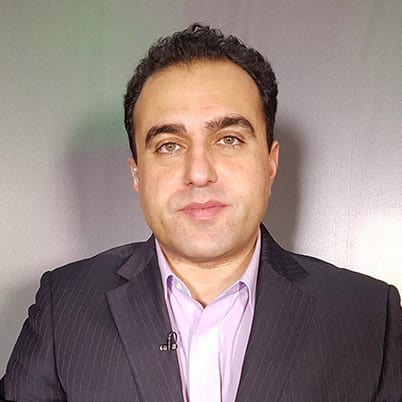As the protests and rioting which gripped Iranian provincial towns subside, Iranian leaders and officials have wasted little time in attributing blame to foreign powers. The Iranian leader, Ayatollah Seyed Ali Khamenei, blamed America and Israel for the unrest, whilst at the same time acknowledging legitimate economic grievances.
This relatively nuanced approach has been adopted by senior Iranian officials, notably the defence minister, Brigadier-General Amir Hatami, who warned that the US will face a “response” to the physical damage inflicted on Iranian towns during the rioting.
Whilst there is no firm indication that outside powers masterminded the protests, nevertheless Iranian leaders and officials have raised the issue for two reasons. First, there is a clear-eyed understanding that any future prolonged unrest will inevitably attract foreign support. Iran is not short of enemies, and the increasingly aggressive posture of the Trump Administration leaves little doubt that the US is intent on interfering in Iran’s internal affairs.
Iran and the American containment
Second, the focus on “foreign” sponsors bring the deepest layers of Iranian leaders’ strategic thinking into sharp relief. It is a reminder that should the situation deteriorate markedly – for instance if there is a prolonged period of unrest – then Iran will seek to regionalise the crisis. In conceptual terms, “national security” and “regional hegemony” are closely intertwined in Iranian strategic discourse. In view of this conceptual proximity, Iran will seek to leverage its regional influence to supress internal threats.
Foreign connections aside, amongst the confusion and excitement of the past fortnight, one big issue has been largely ignored by reporters and analysts. Former Iranian president Mahmud Ahmadinejad is at risk of becoming a scapegoat for the sudden eruption of dissent and protest on Iranian streets.
Ahmadinejad has been fighting with the Iranian establishment for months and it just happens that the peak of that confrontation coincided with the outbreak of nationwide protests in late December. But cracking down on Ahmadinejad and his supporters will do little to address the country’s systemic political and economic problems.
The man who refuses to bow down
Since stepping down as president in 2013 Ahmadinejad has tried to remain engaged both with his supporters and the wider public. These activities are documented in the grandly named Dowlat-e-Bahar (Government of Spring) website. This portal is dedicated to both defending Ahmadinejad’s presidential legacy as well as developing a political movement independent of the conservative/reformist divide in Iranian politics.
Khamenei: Iran has foiled plot to overthrow system
The Ahmadinejad camp stepped up their activities in the run-up to last May’s presidential elections. Ahmadinejad ignored “advice” from the Iranian leader Ayatollah Khamenei to not enter the race, before being disqualified by the Council of Guardians. The Council of Guardians subsequently disqualified one of Ahmadinajd’s closest aides, former vice-president Hamid Baghaei, from contesting the elections.
Baghaei has been the subject of long-running investigations by the judiciary looking at alleged graft and wider impropriety during his term in office. He was arrested and detained as far back as 2015 and just a few weeks ago it emerged that he has been sentenced to 63 years in prison on corruption charges.
Relentless legal pressure on Ahmadinejad’s closest aides has provoked an open confrontation between Iran’s combative former president and the establishment. Ahmadinejad has focussed his criticism on the country’s increasingly oligarchic politics, as represented by the Larijani brothers, and the powerful but unaccountable judiciary.
Beyond confronting the country’s key institutions, the Ahmadinejad camp has consistently criticised President Hassan Rouhani’s neoliberal economic policies on the grounds that they have produced widespread economic distortions, as demonstrated by rising poverty and a widening wealth gap. These are precisely the same grievances that motivated genuine protestors, as opposed to opportunistic rioters.
A test for the establishment
The escalating war of words throughout December between Ahmadinejad and judiciary chief Sadiq Larijani finally forced Ayatollah Khamenei to intervene. Whilst not naming Ahmadinejad directly, Khamenei made it clear that “former” leaders and officials should bear responsibility for the country’s problems instead of painting themselves as opposition.
Whilst this was a forceful intervention, nonetheless it was worded carefully enough so as not to deny Ahmadinejad the opportunity to continue his political activism. Khamenei’s intervention was more designed to moderate and regulate the heated exchange between Ahmadinejad and current leaders, not to stop it altogether.

Supreme Leader of Iran, Ali Khamenei addresses the Iranian Army in Tehran, Iran on 19 April 2017 [Supreme Leader Press Office/Anadolu Agency]
President Rouhani’s allies initially blamed their conservative rivals for the protests, before the focus shifted to foreign powers. But in an indication that the authorities may also be looking for domestic scapegoats, the commander of the powerful Revolutionary Guards, Major-General Mohammad Ali Jafari, claimed that a “former official” may be involved in the protests. There is little doubt that he was referring to Mahmoud Ahmadinejad.
The idea that the Ahmadinejad camp was involved in the protests is fanciful. The authorities may be alarmed by Ahmadinejad’s strident and confrontational politics, but they cannot realistically connect the former president and his supporters to anti-regime sentiments. Indeed, a forensic scrutiny of the Ahmadinejad camp’s online and offline activity reveals a protest movement that is unequivocally loyal to the discourse, values and traditions of the Islamic Republic.
The former Iranian president and his supporters may want to radically reform the country’s politics and economy, but they do not seek to overthrow the system. Instead of trying to suppress this movement, the Iranian authorities can do much better by allowing it the space to compete on an equal footing with the country’s more established political forces.
The views expressed in this article belong to the author and do not necessarily reflect the editorial policy of Middle East Monitor.


![Thousands of Iranians hold banners and posters as they take part in a pro-government rally in Mashhad, Iran on January 4, 2018 [Nima Najafzadeh / Anadolu Agency]](https://i0.wp.com/www.middleeastmonitor.com/wp-content/uploads/2018/01/20180104_2_27913069_29475147.jpg?fit=1200%2C800&ssl=1)









